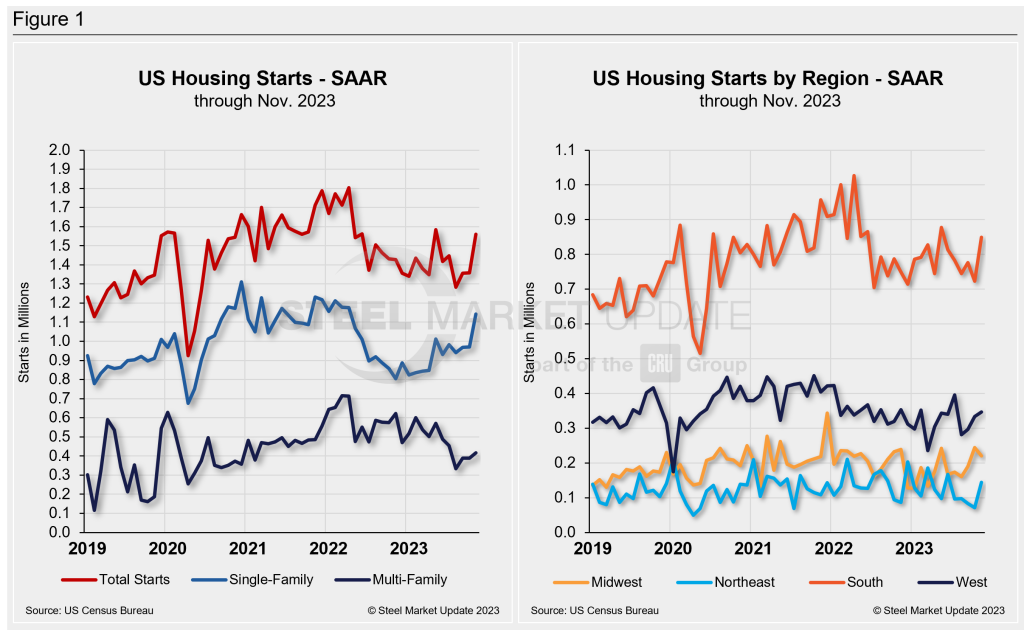Economy

Housing starts climb in November as interest rates fall
Written by Ethan Bernard
December 19, 2023
US housing starts jumped in November on lower interest rates stimulating home buying, according to the most recent data from the US Census Bureau.
Total privately owned housing starts were at a seasonally adjusted annual rate (SAAR) of 1.56 million in November, 14.8% higher than the revised October estimate of 1.359 million, Census said on Dec. 19. This was also 9.3% above the November 2022 rate of 1.427 million starts.
Single‐family housing starts saw an 18% month-over-month (MoM) increase in November to 1.143 million vs. the revised October figure of 969,000.
Regionally, the Midwest and West saw positive MoM growth, with starts rising by 12.4% and 12.1%, respectively. However, starts were down 34.4% in the Northeast and 6.7% in the South.
Meanwhile, the total number of privately owned housing units authorized by building permits in November stood at a SAAR of 1.46 million, 2.5% less than the revised October rate of 1.498 million but 4.1% higher than the November 2022 rate of 1.402 million.
“Lower interest rates and a lack of resale inventory helped to provide a strong boost for new home construction in November,” Alicia Huey, chairman of the National Association of Home Builders (NAHB), said in a statement.
“The single-family starts figure is remarkably strong, and we would not be surprised to see this figure revised lower or fall back slightly in the next month, given the nearly 20% rise in November,” NAHB chief economist Robert Dietz added.
He said that NAHB forecasts a 4% gain for single-family starts in 2024, “as mortgage rates settle lower, economic growth slows and inflation moves lower.”


Ethan Bernard
Read more from Ethan BernardLatest in Economy

New York state manufacturing index drops again in April
Firms were pessimistic, with the future general business conditions index falling to its second lowest reading in the more than 20-year history of the survey

Construction adds 13,000 jobs in March
The construction sector added 13,000 jobs, seasonally adjusted, in March, but tariffs could undermine the industry.

Supply chains, end-users brace for impact from tariffs
Supply chains are working through what the tariffs mean for them

ISM: Manufacturing expansion loses steam after two months of growth
US manufacturing activity slowed in March after two straight months of expansion, according to supply executives contributing to the Institute for Supply Management (ISM)’s latest report.

Chicago Business Barometer rose to 16-month high in March
The Chicago Business Barometer increased for the third-consecutive month in March. Despite this, it still reflects contracting business conditions, as it has since December 2023.
